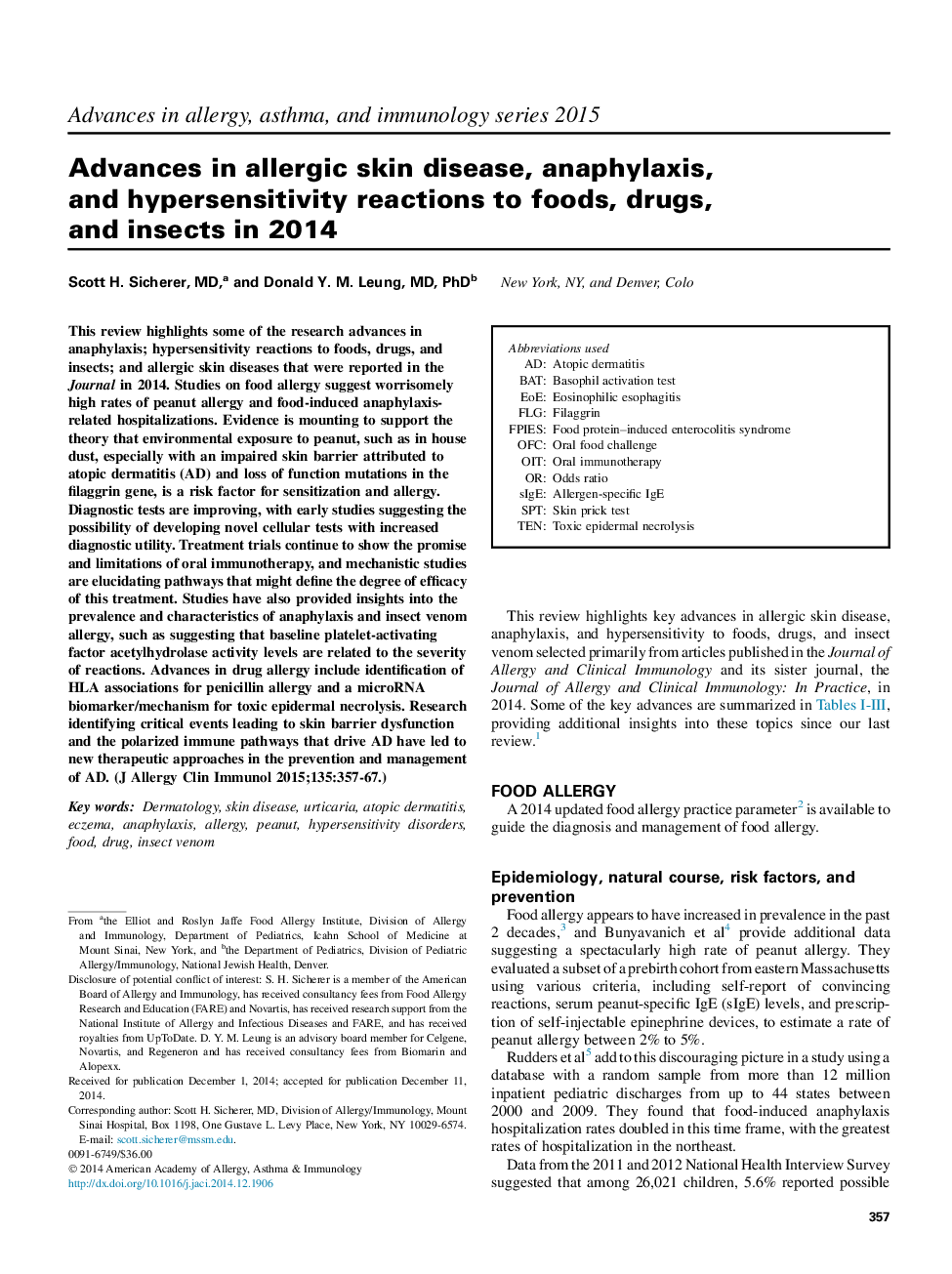| Article ID | Journal | Published Year | Pages | File Type |
|---|---|---|---|---|
| 6063338 | Journal of Allergy and Clinical Immunology | 2015 | 11 Pages |
This review highlights some of the research advances in anaphylaxis; hypersensitivity reactions to foods, drugs, and insects; and allergic skin diseases that were reported in the Journal in 2014. Studies on food allergy suggest worrisomely high rates of peanut allergy and food-induced anaphylaxis-related hospitalizations. Evidence is mounting to support the theory that environmental exposure to peanut, such as in house dust, especially with an impaired skin barrier attributed to atopic dermatitis (AD) and loss of function mutations in the filaggrin gene, is a risk factor for sensitization and allergy. Diagnostic tests are improving, with early studies suggesting the possibility of developing novel cellular tests with increased diagnostic utility. Treatment trials continue to show the promise and limitations of oral immunotherapy, and mechanistic studies are elucidating pathways that might define the degree of efficacy of this treatment. Studies have also provided insights into the prevalence and characteristics of anaphylaxis and insect venom allergy, such as suggesting that baseline platelet-activating factor acetylhydrolase activity levels are related to the severity of reactions. Advances in drug allergy include identification of HLA associations for penicillin allergy and a microRNA biomarker/mechanism for toxic epidermal necrolysis. Research identifying critical events leading to skin barrier dysfunction and the polarized immune pathways that drive AD have led to new therapeutic approaches in the prevention and management of AD.
